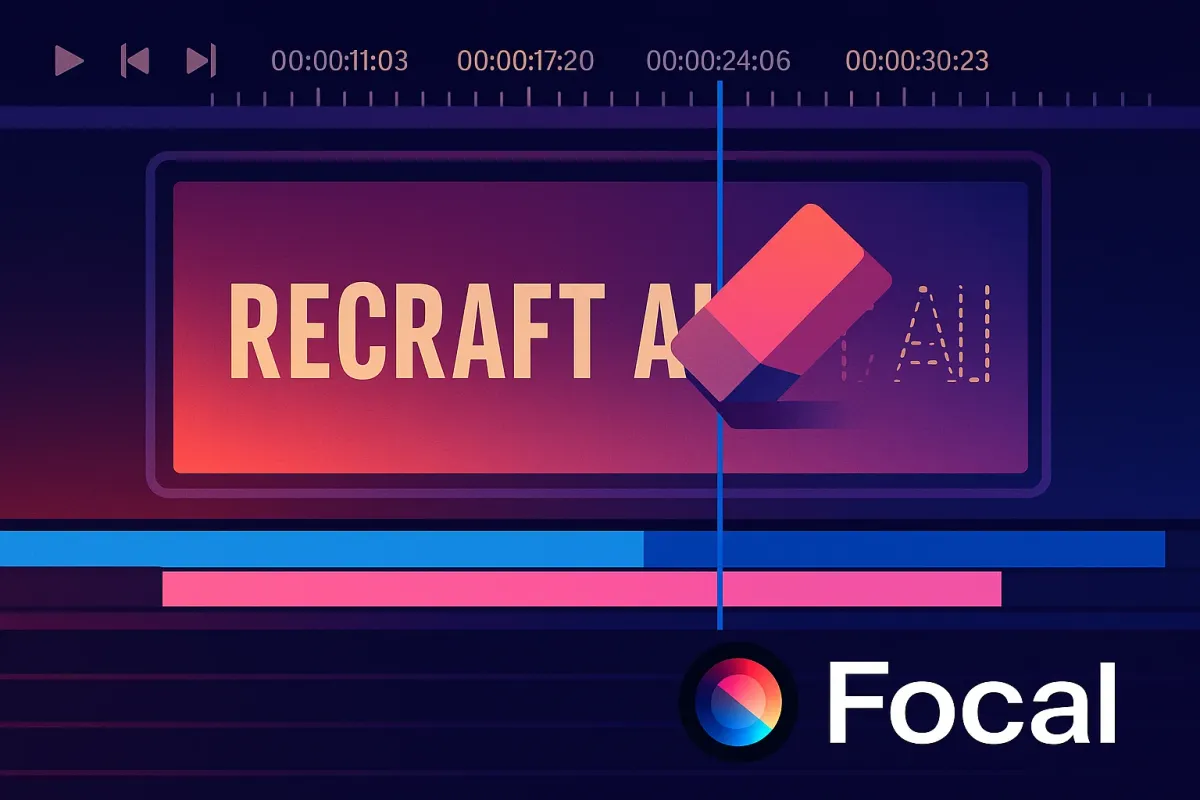Can You Remove Text from an Image Using Recraft AI?

Removing text from images used to be a tedious process—painstaking brushwork in Photoshop or layering masks in Illustrator. But now, AI models like Recraft can do in seconds what used to take hours. And we're not talking about blurry, smudged, or barely-usable edits. We're talking about clean, content-aware, stylistically consistent removals that actually look like the original design never had text in the first place.
Let’s explore how Recraft AI handles text removal and what kind of output you can expect.
How Well Does Recraft AI Remove Text from Images?
| Feature | Performance |
|---|---|
| Text Detection | High accuracy (especially with legible fonts) |
| Background Consistency | Excellent with gradients, flat colors, and patterns |
| Complex Scene Reconstruction | Good, though less predictable with photo-realistic detail |
| Style Matching | Maintains surrounding style, tone, and design logic |
| Batch Processing Possibility | Not native, but results can be consistent across runs |
Key takeaway: Recraft isn’t just erasing text—it’s recreating the scene as if the text had never been there.
Visual Use Cases Where AI-Based Text Removal Actually Works
This isn’t just about cleaning up your mockups. Here are real-world, creative scenarios where Recraft’s output is not just usable—it’s production-ready.
- Social media repurposing
Remove old CTA text or seasonal copy from branded visuals to reuse assets. - Internationalization
Strip original-language copy to allow space for translated text in a new campaign. - Template regeneration
Extract clean background elements from old designs to create editable templates. - Brand sanitization
Remove other brand names or watermarks from stock inspiration (ethically, of course). - Poster & thumbnail redesigns
Start from an old image without rebuilding from scratch—just wipe the headline clean.
What Happens Under the Hood?
Even if you don’t care about how it works technically, understanding what’s actually being generated can help you make better use of it.
textCopyEdit1. AI identifies the region with text using spatial pattern recognition.
2. It extrapolates the background texture from surrounding areas.
3. It inpaints the cleared area, not by smudging, but by generating plausible pixel data.
4. Style and structure are preserved—color, shading, even subtle gradients.
The result isn’t just a “blurred-out” mess. You get an intelligently reimagined piece of the image, often indistinguishable from hand-retouched work.
Things That Affect the Output Quality
Not every image is treated equally. Here’s what impacts the final result:
✅ Works Great With:
- Vector-style graphics
- Flat UI elements
- Abstract backgrounds
- Design mockups and slides
⚠️ Needs More Care:
- Photographs with shadows or lighting variation
- Text over human faces or objects
- Low-resolution inputs
- Highly textured or noisy backgrounds
👎 Avoid If Possible:
- Text embedded within intricate artwork
- Transparent overlays that blend into the design
- Watermarked images with partial opacity
Tips for Getting the Cleanest Results
You don’t need to tweak the model—but you can influence the output with a few clever moves:
- Crop closely around the text region before input.
- Increase contrast between text and background for better detection.
- Use prompt phrases like “remove text but keep background seamless” if supported.
- Upscale first, then run removal—high-res gives better context for inpainting.
Comparing Output: Recraft AI vs Traditional Methods
| Method | Time | Effort | Visual Quality | Consistency |
|---|---|---|---|---|
| Photoshop Manual | High | High | Variable (depends on skill) | Low |
| Clone/Heal Tools | Medium | Medium | Patchy in complex scenes | Medium |
| Recraft AI | Low | Very Low | High (in most designs) | High |
You’ll still need judgment, especially on photo-realistic images—but for graphics, it’s a no-brainer.
Advanced Use: Using the Output as a “Negative Mask”
Here’s a clever hack for those working on iterative content:
- Upload the image with the text.
- Use Recraft to remove the text.
- Save the result.
- Now, overlay your own editable text in Figma, Canva, or wherever.
- You’ve effectively created a dynamic template.
This is especially powerful for brands managing large content libraries across regions or campaigns.
Alternative Outputs: It’s Not Just for Text Removal
Once you have a clean, de-texted version of an image, that opens up other creative possibilities:
- Animate elements without text interference.
- Create multiple variants (A/B tests) with alternate messaging.
- Feed the image into other AI tools (e.g. background changers, upscalers).
Text removal becomes the starting point, not the end goal.
Final Word: Is It Production-Grade?
Yes—for most design and UI-based imagery, the output of Recraft's text removal is not just good enough, it’s often better than manual methods. Cleaner, faster, and more consistent.
You don’t need to rely on the original working file anymore. With the right prompt and quality input, you can reverse-engineer editable assets from flattened designs.
And that’s not just convenience. That’s leverage.
